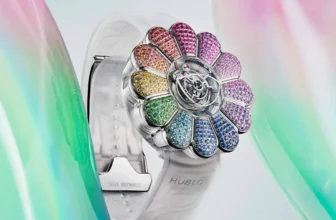Why Many Don’t Agree with International Women’s Day
The early morning sunlight streamed through the window as Mira sipped her coffee and scrolled through her news feed. It was March 8th , International Women’s Day. Her screen was filled with celebratory posts: companies showcasing their female leaders, brands launching campaigns, hashtags trending. But then, like every year, the comments began to pour in.
“Why isn’t there an International Men’s Day?”
“This is just another excuse for feminism to complain.”
“We don’t need this anymore. Women already have equal rights.”
“This is so divisive.”
Mira sighed. Every year, the same questions. The same pushback. And yet, the same need for the day.
Why Many Don’t Agree with International Women’s Day
Mira wasn’t surprised anymore. She had spent years working in corporate leadership, advocating for gender equality. But she knew the criticism didn’t just come from ignorance, it often came from a misunderstanding of what International Women’s Day (IWD) was truly about.
Opposition to IWD can be broken down into a few common reasons:
1. Misunderstanding of Purpose:
Many people see IWD as a celebration that excludes men or as a feminist-driven campaign that seeks to elevate women over men. In reality, it’s about acknowledging disparities and working toward equity. But in a world increasingly wary of identity politics, any exclusive spotlight can feel, to some, like exclusion.
2. Perceived Redundancy:
Critics argue that since many countries now have laws protecting women’s rights, the day is no longer necessary. They point to female CEOs, heads of state, and high achievers as evidence that equality has been reached.
3. The “What About Men?” Response:
Some people feel that men’s issues, like mental health, workplace fatalities, or educational dropouts, are ignored. When IWD is heavily promoted, it can spark resentment in those who feel their own struggles are being overlooked.
4. Commercialization Fatigue:
There’s a growing cynicism toward corporate participation in social causes. When companies use IWD as a marketing opportunity without any real commitment to gender equality, it can feel disingenuous, even exploitative.
But perhaps the most ironic part of the criticism is that it often reinforces the very reasons why IWD exists in the first place.
Why Do We Still Need International Women’s Day?
Mira thought about her own experiences: being talked over in meetings, judged more harshly than her male counterparts, and once being told she was “too ambitious” during a performance review.
Even in 2025, the data doesn’t lie:
Women globally still earn less than men for the same work.
In some countries, women cannot make legal decisions without a male guardian.
In others, gender-based violence is rampant, often unpunished.
Women make up less than 30% of national parliament members worldwide.
The pandemic disproportionately impacted women’s employment and caregiving responsibilities.
International Women’s Day serves as both a celebration and a call to action. It’s a reminder that while progress has been made, the journey toward equality is far from over.
The Theme for International Women’s Day 2025
Each year, International Women’s Day has a theme to reflect the current global focus for gender equality efforts.
For 2025, the theme is: “Invest in Women: Accelerate Progress.”
This theme highlights the critical need to channel economic, political, and social resources toward women, especially in areas of education, healthcare, leadership, and entrepreneurship.
“Investing in women isn’t just the right thing to do,” Mira remembered reading. “It’s the smart thing to do.”
The 2025 theme recognizes that real change happens when governments, businesses, and communities back their words with action, and funding.
Why Is There an International Women’s Day and Not Men’s Day?
Mira smiled at this question. It came up every year, like clockwork.
Here’s the truth: There is an International Men’s Day. It’s on November 19th.
The problem isn’t that men are ignored; it’s that Men’s Day isn’t as widely known or celebrated. One reason is that the issues it highlights, like men’s mental health, suicide rates, or the effects of toxic masculinity, are still taboo in many cultures. The stigma around men being vulnerable or needing help is strong, and it stifles conversation.
International Women’s Day exists not to compete with men, but to amplify voices that have historically been silenced. Men’s Day is just as valid, but it addresses a very different set of issues.
Is International Women’s Day About Feminism?
Absolutely. But it depends on how you define feminism.
If you think feminism is about hating men or demanding superiority, then no, that’s not what IWD is about.
But if you believe feminism is about equality of opportunity, freedom, and dignity for all genders, then yes, IWD is undeniably feminist.
Feminism at its core advocates for the removal of barriers that prevent anyone, regardless of gender, from living fully and freely. International Women’s Day is a platform to highlight those barriers and push for their dismantling.
And it’s not just for women. Male allies play a huge role in achieving gender equality. Feminism benefits everyone, because gender stereotypes harm everyone.
Who Invented International Women’s Day?
Mira thought back to the history lesson she once gave during a workshop. The roots of IWD are rich and global.
The very first National Women’s Day was observed in the United States on February 28, 1909, organized by the Socialist Party of America in honor of a 1908 garment workers’ strike in New York.
But the idea of an international day was proposed by Clara Zetkin, a German Marxist theorist and women’s rights activist, at the International Socialist Women’s Conference in 1910. Her proposal was met with unanimous approval.
The first International Women’s Day was celebrated in 1911 in Austria, Denmark, Germany, and Switzerland, with over a million people attending rallies.
IWD was later solidified by the United Nations, which began celebrating it in 1977 and now sets the global theme each year.
The Slogan for International Women’s Day 2025
Slogans often capture the spirit of a movement in just a few words. For 2025, alongside the theme, the official slogan is:
“Empower Her. Empower Humanity.”
It’s a powerful reminder that when you invest in women, when you empower girls, protect their rights, ensure their access to education and leadership, you uplift entire communities, economies, and nations.
Mira had seen it firsthand in the mentoring program she ran: young women gaining confidence, skills, and a sense of purpose, and then giving back to others.
A Day for More Than Just Celebration
As Mira put down her coffee and logged into her first meeting of the day, she thought about how far the world had come, and how far it still needed to go.
International Women’s Day wasn’t perfect. Like any global movement, it had its flaws. It was often co-opted by corporations. It could sometimes feel performative. It still struggled to be truly inclusive of all women, especially those from marginalized communities.
But at its core, it was a day of purpose.
It was a day for:
The girl in Afghanistan fighting for her right to study.
The woman in tech breaking through the glass ceiling.
The mother juggling unpaid labor and a full-time job.
The trans woman seeking safety and recognition.
The grandmother who never got the opportunities her granddaughters now fight for.
And yes, it was a day for the men and boys who wanted to build a fairer world alongside them.
International Women’s Day was not about excluding anyone.
It was about including everyone in the fight for equality.
So, next time someone asked, “Why do we still need International Women’s Day?” Mira would answer simply:
“Because the world we want doesn’t exist yet. But we’re building it, together.” image/businessinsider




